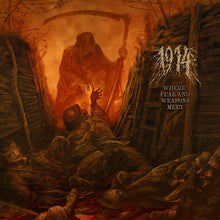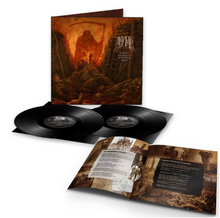Ukrainian blackened death/doom metal offensive 1914 continue to reflect the gruesome tales of World War I, its soldiers’ fate, their death, fear and feats to be never forgotten, and unleash their new opus, Where Fear and Weapons Meet, on October 22nd, via Napalm Records. Its eleven tracks of pure historic harshness follow up to the band’s sophomore full-length, The Blind Leading the Blilnd (2018), and debut, Eschatology of War (2014), both highly acclaimed amongst critics, and create a sophisticated variety of massively brutal blackened death metal accented by dramatic and realistic audio soundscapes and disquieting melodies spiced with the approach of sludge and doom! Blurb IG#1: "After their highly acclaimed previous records, blackened death/doom metal unit 1914 again faces the cruelty of World War I on its third opus Where Fear and Weapons Meet . The first single “...And a Cross Now Marks His Place” already marks an absolute highlight, as this massive outburst features none other than Paradise Lost icon Nick Holmes, whose pervasive delivery matches with 1914 ’s mastermind Hptm. Ditmar Kumarberg’s (9. Westpreußisches Infanterie-Regiment Nr. 176) vocal harshness." Blurb IG#2: Blackened death/doom metal frontrunners 1914 return with their third inexorable opus, the new studio album Where Fear and Weapons Meet. On this masterpiece of pure harshness, 1914 again reflects the gruesome tales of World War I without making any compromises. Second single “Pillars of fire”, that deals with The Battle of Messines in 1917, starts with an atmospheric introduction that draws the listener deep into the album theme and erupts into a massive blackened death/doom outburst shortly after. Blurb IG#3:Since 2014, Ukrainian blackened death/doom metal visionaries 1914 have told the gruesome tales of World War I and are now ready to face the fiery depths again on their third attack, Where Fear and Weapons Meet. Third single “FN .380 ACP#19074” breaks in with heavy guitar lines and thunderous black metal drumming like a blaze of gunfire and reflects the assassination of Austrian Archduke Franz Ferdinand and his wife 1914 in Sarejevo, an event that caused the outbreak of World War I.




